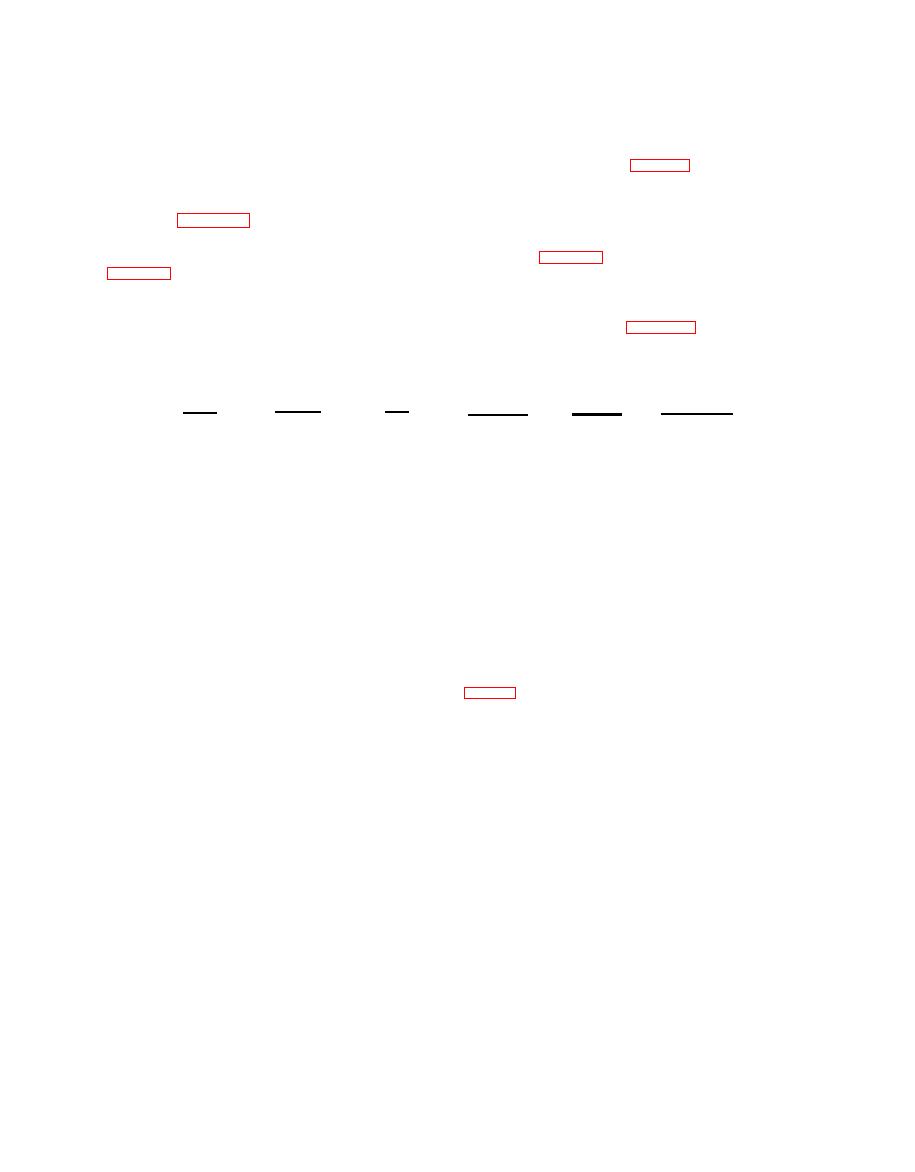 |
|||
|
|
|||
|
Page Title:
Inspection of Cylinders for Scuffing |
|
||
| ||||||||||
|
|
 h. Lubricating Oil Pressure Outlets.
(7) Add oil as required to bring oil in oil pan
Lubricating oil pressure outlets are provided in
to full level as indicated on oil level gage,
t h e main and piston oiler nozzle gallery lines for
carefully measuring amount added.
i n s t a l l a t i o n of pressure sensing gages to measure
(8) Maximum allowable oil consumption at
2400 rpm, with SAE 30 oil, is 0.0075 pounds
t h e engines oil pressures (para 8-1i, (1) and (2)).
i. Induction Air Temperature. An outlet is
per brake horsepower hour (lbs / bhp / hr).
provided in the bottom of the intake manifold,
g. Checking Exhaust Gas Temperature. P i p e
on each side of the engine, for installation of
plugs (4, fig. B-12) are provided in exhaust
thermocouples to measure induction air tem-
manifold elbows for installation of ther-
mocouples to measure exhaust gas temperatures
perature (para 8-1j).
j . Manifold Pressure. An outlet is provided in
cylinders should not exceed 150F. Check fuel
t h e intake manifold elbows, on each side of the
injector nozzles of cylinders that exceed this
engine, for installation of a manometer gage
variation.
and / or connection (para 8-11).
Table 8-1. Overhaul Test Schedule-Beam Length...1.75 Ft.
(or 21.008 in.)
Scale limits
Obs. BHP
RPM
Torque Lh-Ft.
Time Min.
Run No.
1
10
Warm-up
700
16.0
2
84
15
1000
16.0
3
438
15
83.5
116.9
1400
20
1800
159.5
287.1
4
837
429.0
5
1024
20
2200
195.0
20
208.0
499.2
6
1092
2400
549.6
7
1202
30
2400
229.0
F.R. - F.L.
F.R. - F.L.
8
2400
F.R. - F.L.
30
Check for low idle at 675 to 725 rpm. Adjust if necessary.
9
10
C h e c k oil filter and inspect for oil and fuel leaks.
11
12
5
2200
F.R. - F.L.
5
F.R. - F.L.
13
2000
1800
F.R. - F.L.
14
5
Check governor high idle speed. This shall not exceed 2640 rpm,
15
(No-Load, water off). If adjustment is required, recheck horsepower
at 2400 full load.
16
Borescope cylinders (para 8-6), check for fuel and oil leaks, prepare
engine for removal from stand.
result of one or more conditions such as;
Note. Run numbers 1 through 8, and 11
t h r o u g h 14, shall equal three hours. Sequence of
a b r a s i v e s in the oil or induction air, lack of or
i m p r o p e r honing, defective piston ring, etc. The
operations may be varied.
heat and pressures involved during the scuffing
8-6. Inspection of Cylinders for Scuffing
process will flow or smear the cylinder wall metal
a. G e n e r a l .
and destroy the honing pattern. The process in
(1) As used in this publication, cylinder wall
g e n e r a l generates additional heat due to friction
"scuffing" is defined as a streak or streaks,
a n d in many cases the scuffing will progress or
r u n n i n g the length of the piston ring travel, on
the width of the afflicted area will grow and may
the cylinder wall, which are greater than 1 / 4
envelope the entire cylinder bore. Scuffing is
inch wide and which reveal a high gloss or polish
d e t r i m e n t a l to the engine, since oil consumption
w h e r e the cylinder wall honing pattern has been
a n d blow-by gases can no longer be controlled.
completely worn away.
b. Borescope Inspection.
(2) Scuffing is caused by excessive localized
(1) After completion of dynamometer in-
h e a t on the contact face of the piston ring and
spection, all overhauled engines s h a l l h a v e
cylinder bore. The excessive heat is due to a
cylinders inspected by borescope as follows:
b r e a k d o w n of the oil lubricating film and is the
8-7
|
|
Privacy Statement - Press Release - Copyright Information. - Contact Us |